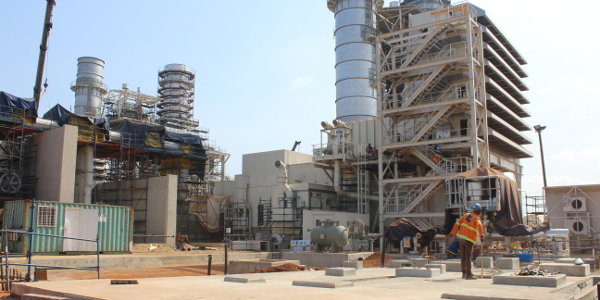The Kpone independent power plant, which is being developed by Cenpower Generation Company, is anticipated to play an important role in meeting Ghana’s growing electricity demand.
African Infrastructure Investment Managers (AIIM) – part of Old Mutual Alternative Investments – is one of the project’s core equity investors. How we made it in Africa speaks to Vuyo Ntoi, investment director at AIIM, about investing in infrastructure and why the Ghana project is a good case study of Africa investing in Africa. Here are edited excerpts.
AIIM is one of the main investors in the Kpone independent power plant in Ghana, expected to be commissioned by the end of 2017. Tell us more about this project.
Kpone is one of the first independent power plants to be implemented in Ghana. And it is certainly the largest to date, being a 340MW combined-cycle facility. We have specifically designed the project to take a number of fuel sources so that it doesn’t become a stranded asset should one of the envisaged fuel sources not be available. The plant can run on crude oil, it can run on distillate (which is also a derivative of petroleum), and it can also run on natural gas.
You are probably aware that there have been some significant oil finds off the Ghanaian coast, and those usually come with associated gas. Ghana is in the process of commercialising these gas finds. We expect that over the course of the next two to three years, piped natural gas will be available to the facility. This will reduce the tariffs that power users are currently facing in Ghana, because power produced using natural gas is a lot cheaper than power that is generated through crude oil or other petroleum derivatives.
You’ve mentioned in an earlier press release that the project is a true realisation of Africa investing in Africa. Please elaborate.
The predominant players in other independent power plants in Africa have tended to be parties from outside Africa. If you look, for instance, at the debt that has been sourced for this project, all the commercial lenders are African, and largely South African-based entities. On the development finance institution side, which is approximately half of the debt funding, you have the likes of the Development Bank of Southern Africa and the Industrial Development Corporation involved as well. So lots of African debt in the project.
On the equity side, other than Sumitomo (a Japanese group), all the other shareholders are African, including ourselves. So it is a company that is predominantly equity financed by African parties. And from a construction perspective, the contractor is Group Five, again a South African company.
Share some of the lessons from working on this project.
One of the more important learnings is that we certainly can do it by ourselves, i.e. Africans developing projects of this nature. I think the development effort and the quality of the project in terms of design, implementation and governance are second to none anywhere. Another takeaway, given that the project has been funded largely by African institutions, is that even from a costing perspective, African players can be cost-competitive with the Chinese.
An additional learning is how important it is to have local participation. By having local Ghanaians involved in the project, a lot of the pitfalls of implementing projects of this nature have been avoided.
Describe some of the biggest risks AIIM faces in terms of African infrastructure investments. What keeps you awake at night?
Our job as infrastructure investors is to mitigate risk. So if things are keeping me awake at night, it means that I haven’t done my job properly.
One of the biggest risks is, for instance, non-payment. So you build a power station, and then you don’t get paid for the power you produce, which is a risk inherent in power projects wherever they are built. What we’ve done is ensure that, from a pricing perspective, this plant is competitive versus other sources of power in the country. We’ve also ensured that it is a critical part of the national plan from a power perspective rather than building an obsolete white elephant for which we are expecting to get paid. It is in keeping with the national power plan, so that ensures sustainability.
We’ve looked to mitigate risk throughout – the costs associated with the project are linked to the tariffs we are getting, so we mitigated cost pressure in that way. There is an interest rate risk that we’ve mitigated through hedging the interest rates. There is also the risk of the contractor not fulfilling its obligation, and those have been mitigated through strong contractual support that the contractor provides behind fulfilling its obligations. What we’ve done, and what we do on all our projects is to mitigate risk where we see it.
Source: howwemadeitinafrica.com




